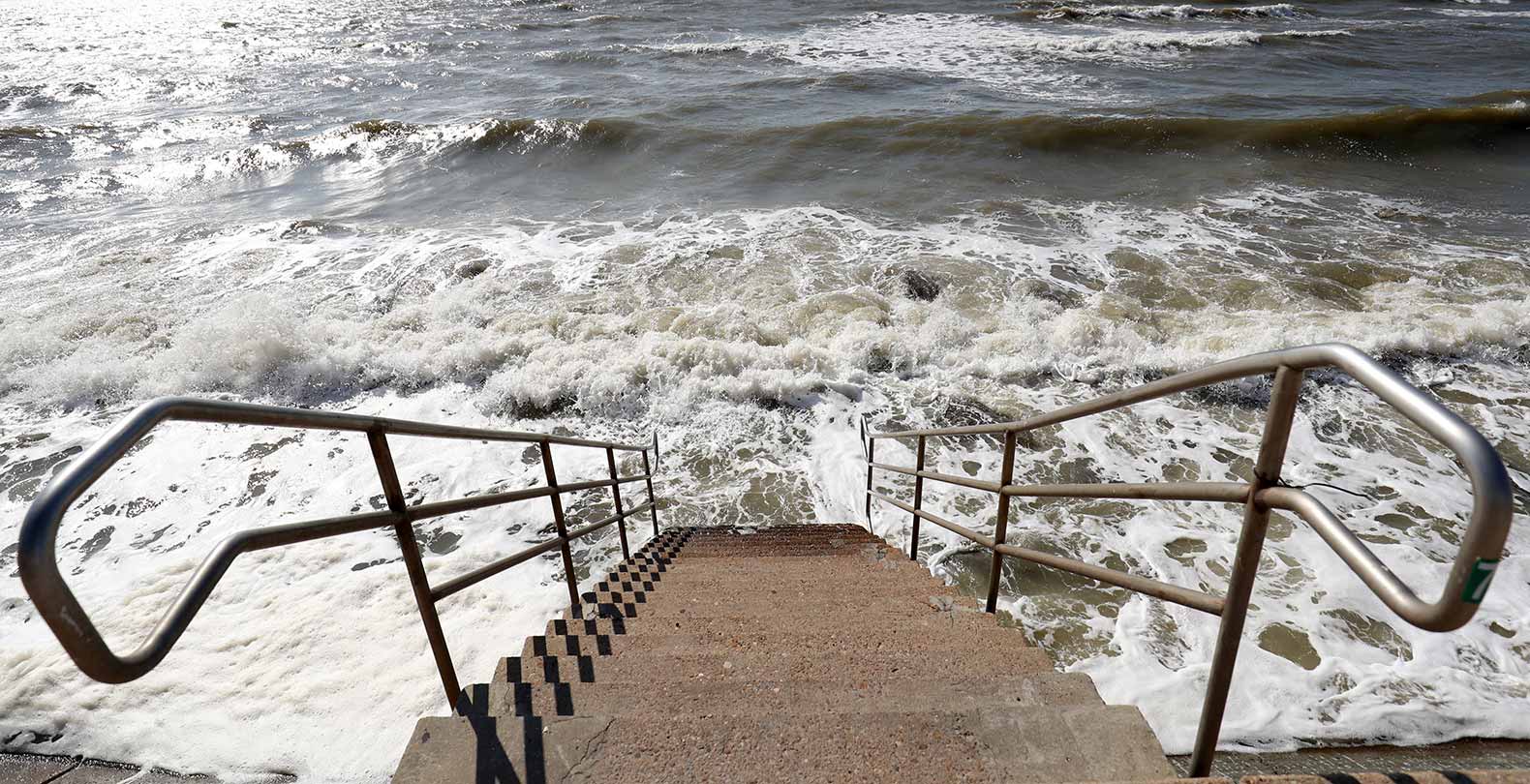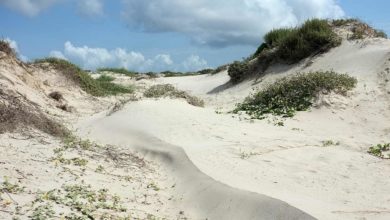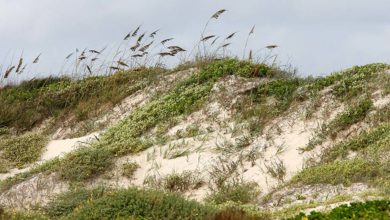Why are dunes disappearing?
Dunes and beaches wax and wane naturally with the vagaries of the seasons and the weather, but other forces have left a more permanent scar.
Often the first step a developer takes in building on the coast is cutting pathways through to the beach – sometimes leveling the dunes altogether. With the removal of vegetation and the ensuing recreational traffic, the damaged dunes cannot not grab a foothold to recover. While the dunes that remain today are more protected, much of the original coastal landscape in Galveston and other resort towns is gone.
Another source of erosion comes from human intervention in the natural flow of sand along the coast. As Willard Bascomm noted in his classic, Waves and Beaches, “Either sand is being removed from some place that people wish it would stay or being deposited in some place where it is not wanted.” Engineers want to keep sand from clogging ship channels and inlets, while government officials want to protect coastal property and shore up the recreational beaches on which their local economies thrive. The result is a complex network of jetties, groins and sea walls that recasts the shoreline, often with unintended consequences.

Most of these structures are at work in Galveston. Long jetties at the entrance of Galveston Bay keep sand from clogging the inlet so the massive tankers and freighters that pass through it have an unobstructed path to the Gulf. Groins jutting out from the east end of the island slow the longshore current, causing it to drop its sand along the recreational beaches there. The first bulwarks of the Galveston seawall were set in 1902-1904 in the aftermath of a hurricane that killed more than 6,000 people in 1900. The wall now extends about a third of the island’s length and successfully mitigated damage to the core of the island from the storm surge associated with Hurricane Ike.
The flaw behind most of these structures is that there is only so much sand to go around. Accumulating sand in one place simply robs it from further down the coast. Sand trapped behind the jetties and groins on the east end of Galveston essentially erodes it from the beaches and dunes on the west end. Interrupting the natural flow of sand breaks the balance between sea, beach and dune. Beaches down the coast narrow, while their dunes slip away.
Putting further strain on coastal dunes is the slow but certain rise of the sea in response to a warming climate. The natural response of the beach is to retreat landward, but commercial development and sea walls stand in the way. To get an idea of what is happening, visit the west end of the sea wall in Galveston. The beaches that once extended hundreds of yards in front of the wall are gone as waves now lap up against the concrete steps that once led down to the sand. Past the end of the sea wall, waves break against the natural shoreline hundreds of feet to the rear.
All of these structures can postpone what is to come, but in the long run nature has a way of getting its way.





